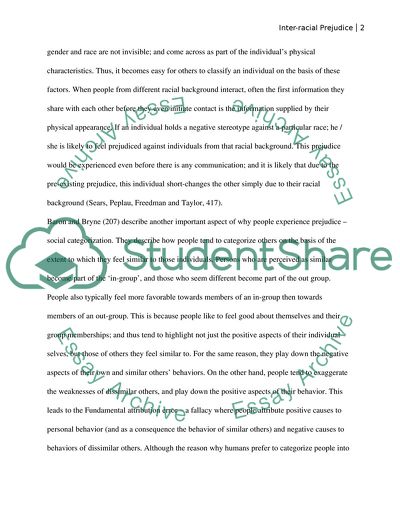Cite this document
(“Inter-Racial Prejudice Essay Example | Topics and Well Written Essays - 2000 words”, n.d.)
Inter-Racial Prejudice Essay Example | Topics and Well Written Essays - 2000 words. Retrieved from https://studentshare.org/psychology/1760765-please-note-that-any-report-that-is-pure-research-will-receive-an-automatic-f-the-report-is-to-be-a-balance-of-your-interest-critical-thinking-and-analysis-of-the-topic-chosen
Inter-Racial Prejudice Essay Example | Topics and Well Written Essays - 2000 words. Retrieved from https://studentshare.org/psychology/1760765-please-note-that-any-report-that-is-pure-research-will-receive-an-automatic-f-the-report-is-to-be-a-balance-of-your-interest-critical-thinking-and-analysis-of-the-topic-chosen
(Inter-Racial Prejudice Essay Example | Topics and Well Written Essays - 2000 Words)
Inter-Racial Prejudice Essay Example | Topics and Well Written Essays - 2000 Words. https://studentshare.org/psychology/1760765-please-note-that-any-report-that-is-pure-research-will-receive-an-automatic-f-the-report-is-to-be-a-balance-of-your-interest-critical-thinking-and-analysis-of-the-topic-chosen.
Inter-Racial Prejudice Essay Example | Topics and Well Written Essays - 2000 Words. https://studentshare.org/psychology/1760765-please-note-that-any-report-that-is-pure-research-will-receive-an-automatic-f-the-report-is-to-be-a-balance-of-your-interest-critical-thinking-and-analysis-of-the-topic-chosen.
“Inter-Racial Prejudice Essay Example | Topics and Well Written Essays - 2000 Words”, n.d. https://studentshare.org/psychology/1760765-please-note-that-any-report-that-is-pure-research-will-receive-an-automatic-f-the-report-is-to-be-a-balance-of-your-interest-critical-thinking-and-analysis-of-the-topic-chosen.


